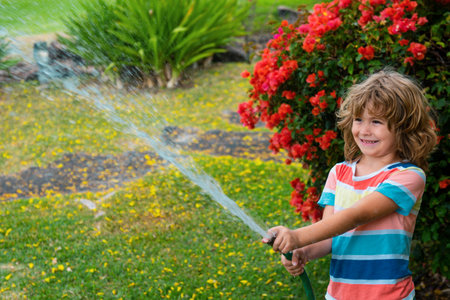Planting Fall-Friendly Trees and Shrubs
Fall is the perfect time to plant hardy trees and shrubs. The cooler air temperatures paired with warm soil create ideal conditions for root development before winter sets in. This means your new plants will have a stronger start when spring arrives.
Why Plant in the Fall?
Unlike the heat of summer, fall offers less stress on young plants. With fewer pests, reduced watering needs, and mild weather, your landscaping efforts are more likely to succeed. Plus, many nurseries offer end-of-season sales, making it a budget-friendly time to enhance your yard.
Choose Native Species
Native trees and shrubs are adapted to your local climate and soil. They often require less water, fertilizer, and maintenance than non-native varieties. Even better, they help support local birds, pollinators, and other wildlife.
Popular Native Trees for Fall Planting
| Tree Name | Fall Color | Wildlife Benefit |
|---|---|---|
| Red Maple (Acer rubrum) | Bright red | Attracts birds & small mammals |
| Sugar Maple (Acer saccharum) | Orange to golden yellow | Provides shelter & food for wildlife |
| Eastern Redbud (Cercis canadensis) | Yellow | Pollinator-friendly flowers in spring |
| Serviceberry (Amelanchier spp.) | Orange-red | Berries attract birds |
Best Shrubs to Plant in Fall
| Shrub Name | Seasonal Interest | Wildlife Support |
|---|---|---|
| Witch Hazel (Hamamelis virginiana) | Yellow flowers in late fall | Nectar source for late pollinators |
| American Beautyberry (Callicarpa americana) | Purple berries in fall | Berries feed birds during migration |
| Oakleaf Hydrangea (Hydrangea quercifolia) | Burgundy foliage & dried blooms | Shelter for birds and insects |
| Virginia Sweetspire (Itea virginica) | Red fall foliage | Nectar-rich flowers in spring/summer |
Tips for Successful Fall Planting
- Water thoroughly: Keep new plantings well-watered until the ground freezes.
- Add mulch: A 2-3 inch layer of mulch helps insulate roots and retain moisture.
- Avoid fertilizing: Fertilizer encourages new growth that may not survive the winter.
- Select planting sites carefully: Ensure proper sunlight and spacing based on mature size.
Selecting and planting the right trees and shrubs this fall can add year-round beauty to your front yard while supporting a healthy local ecosystem.
2. Refreshing Mulch and Garden Beds
Fall is the perfect time to give your front yard garden beds a little TLC. As temperatures begin to drop, refreshing your mulch and adding nutrients to the soil can make a big difference in how well your landscape handles the colder months — and how ready it is for spring growth.
Benefits of Replenishing Mulch in Fall
Adding a fresh layer of mulch doesnt just make your yard look neat and tidy; it also offers several practical benefits during fall and winter:
| Benefit | Description |
|---|---|
| Moisture Retention | Helps keep soil from drying out during cool, windy days. |
| Temperature Regulation | Acts as insulation, protecting plant roots from sudden temperature drops. |
| Weed Suppression | Blocks sunlight from reaching weed seeds, reducing growth. |
How to Refresh Your Mulch Properly
- Start by removing any old or matted-down mulch that may be harboring pests or mold.
- Add 2–3 inches of fresh mulch around trees, shrubs, and perennials—being careful not to pile it up against plant stems or trunks.
- Use organic mulch like shredded bark, wood chips, or composted leaves for best results.
Prep Garden Beds for Spring
While youre working on your mulch, its also a great time to enrich the soil with compost or other amendments. This gives nutrients time to break down over winter and become available for plants in early spring.
Soil Amendment Tips:
- Add aged compost or well-rotted manure to boost organic matter.
- If your soil is clay-heavy or sandy, mix in peat moss or coconut coir to improve texture and drainage.
- Consider doing a simple soil test to find out what nutrients might be lacking.
A little effort now will go a long way toward keeping your front yard healthy and vibrant when warmer weather returns.

3. Installing Outdoor Lighting for Curb Appeal
As days get shorter, fall is a great time to install low-voltage landscape lighting to enhance safety and create a warm, inviting look for your home’s exterior. The cooler temperatures make it more comfortable to work outdoors, and the earlier sunsets allow you to see the full effect of your lighting in real time.
Why Install Outdoor Lighting in Fall?
Outdoor lighting not only highlights your landscaping features but also adds an extra layer of security. With more hours of darkness during fall, good lighting can help prevent trips and falls while making your home stand out on your street.
Benefits of Fall Landscape Lighting
| Benefit | Description |
|---|---|
| Improved Safety | Illuminates pathways, stairs, and entrances to reduce accidents. |
| Enhanced Curb Appeal | Highlights trees, shrubs, and architectural details. |
| Seasonal Ambiance | Adds a cozy glow that complements fall decorations like pumpkins and wreaths. |
| Increased Home Value | Professionally installed lighting can boost your property’s value and appeal to buyers. |
Popular Types of Low-Voltage Lighting
- Path Lights: Great for walkways and driveways.
- Spotlights: Use these to highlight trees or architectural features.
- Flood Lights: Ideal for illuminating larger areas or enhancing security.
- Deck and Step Lights: Perfect for outdoor stairs and patio areas.
Pro Tip:
Use warm white LED bulbs (around 2700K–3000K) to create a welcoming feel that works well with fall colors and decor.
4. Decorating with Seasonal Accents
Nothing says fall like festive decorations that celebrate the harvest season. Adding seasonal accents to your front yard is a simple and affordable way to create a warm, welcoming look that instantly boosts curb appeal. Here are some classic fall items you can use to transform your landscape into a charming autumn scene:
Popular Fall Decor Items
| Item | Description | Placement Ideas |
|---|---|---|
| Hay Bales | Natural and rustic, perfect for creating layers and height in displays. | Stack near entryways or use as base for other decorations. |
| Pumpkins | A fall staple that comes in various colors, shapes, and sizes. | Line walkways, place on steps, or group around hay bales. |
| Ornamental Cabbages & Kales | Cold-hardy plants with vibrant purple and green foliage. | Add to garden beds or plant in decorative pots for texture and color. |
| Fall-Themed Planters | Containers filled with mums, pansies, and seasonal greenery. | Flank your front door or place along pathways for a bold pop of color. |
Tips for Arranging Your Fall Display
- Create Levels: Use hay bales or crates to add height and dimension to your display.
- Stick to a Color Theme: Choose a palette like orange, burgundy, cream, and green for a cohesive look.
- Mix Textures: Combine smooth pumpkins with leafy cabbages and rough hay for visual interest.
- Keep It Balanced: Symmetrical arrangements work well near entryways; asymmetrical can be great for garden corners or larger spaces.
By incorporating these seasonal elements into your front yard design, you can easily capture the spirit of fall while making your home feel cozy and inviting to guests and neighbors alike.
5. Lawn Care and Overseeding
Fall is the perfect time to give your lawn some TLC after a long, hot summer. Cooler temperatures and increased moisture create ideal conditions for lawn repair and overseeding. If your front yard has bare patches, thinning grass, or compacted soil, this season offers a great opportunity to bring it back to life.
Why Fall is Ideal for Lawn Care
During fall, cool-season grasses such as Kentucky bluegrass, fescue, and ryegrass thrive. The ground is still warm enough for seeds to germinate quickly, but the air temperatures are cooler, reducing stress on new growth. Plus, weeds are less aggressive in fall, giving new grass a better chance to establish without competition.
Key Steps to Fall Lawn Restoration
Here’s a simple breakdown of what you can do to improve your front yard’s lawn this fall:
| Task | Description |
|---|---|
| Aeration | Use a core aerator to pull out small plugs of soil. This reduces compaction and allows air, water, and nutrients to reach grassroots. |
| Overseeding | Spread grass seed evenly over the existing lawn to fill in thin or bare areas. Choose a mix suited for your region’s climate. |
| Fertilizing | Apply a nitrogen-rich fertilizer after seeding to support healthy root growth before winter sets in. |
| Watering | Keep the soil consistently moist until seeds germinate—usually within 7-14 days. Water early in the day to prevent fungal issues. |
Lawn Seed Tips by Region
Selecting the right grass seed is key. Here are some recommendations based on U.S. regions:
| Region | Recommended Grass Types |
|---|---|
| Northeast & Midwest | Kentucky Bluegrass, Fine Fescue, Perennial Ryegrass |
| Southeast (transition zones) | Tall Fescue blends that tolerate both heat and cold |
| Pacific Northwest | Perennial Ryegrass, Fine Fescue mixes |
Pro Tip:
If you’re unsure about your soil quality, consider doing a soil test before fertilizing. It helps you choose the right nutrients and avoid over-fertilization.


